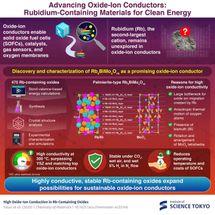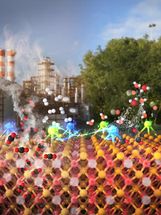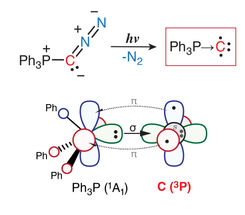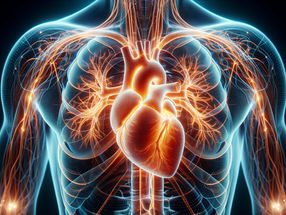Potential energy surfaces of water mapped for the first time
A better understanding of the chemistry of water
liquids are more difficult to describe than gases or crystalline solids. An HZB team has now mapped the potential energy surfaces of water molecules in liquid water under ambient conditions for the first time at the Swiss Light Source SLS of the Paul Scherrer Institute, Switzerland. This contributes to a better understanding of the chemistry of water and in aqueous solutions. These investigations can soon be continued at the newly built METRIXS station at the X-ray source BESSY II.
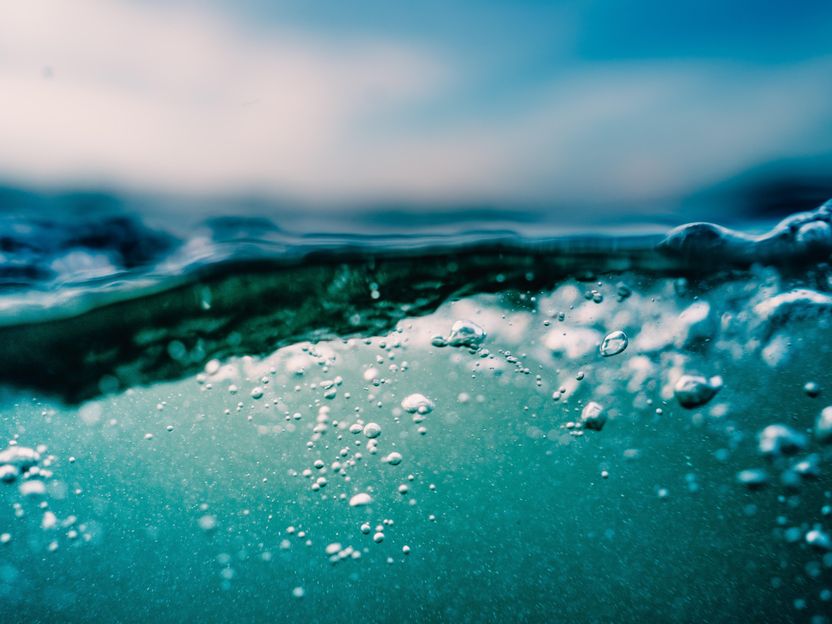
Symbolic image
Unsplash
Water is certainly the best-known liquid in the world. Water plays a crucial role in all biological and many chemical processes. The water molecules themselves hardly hold any secrets. In school already we learn that water consists of one oxygen atom and two hydrogen atoms. We even know the typical obtuse angle that the two O-H legs form with each other. In addition, we know when water boils or freezes and how these phase transitions are related to pressure. But between facts on individual molecules and a deeper understanding of the macroscopic phenomena, there is a wide area of uncertainty: Only statistical information is known about the behaviour of the individual molecules in normal liquid water: the water molecules in the liquid phase form a fluctuating network of hydrogen bonds, disordered and dense, and their interactions are not at all as well understood as in the gaseous state.
Pure liquid water examined
Now, a team led by HZB physicist Dr. Annette Pietzsch has taken a closer look at pure liquid water at room temperature and normal pressure. Using X-ray analysis at the Swiss Light Source of the Paul Scherrer Institute and statistical modelling, the scientists have succeeded in mapping the so-called potential energy surfaces of the individual water molecules in the ground state, which come in a large variety of shapes depending on their environment.
Oscillations and vibrations measured
"The special thing here is the method: we studied the water molecules on the ADRESS beamline using resonant inelastic X-ray scattering. Simply put, we nudged individual molecules very carefully and then measured how they fell back into the ground state," says Pietzsch. The low-energy excitations led to stretching oscillations and other vibrations, which - combined with model calculations - produced a detailed picture of the potential surfaces.
"This gives us a method to experimentally determine the energy of a molecule as a function of its structure," explains Pietzsch. "The results help to enlighten the chemistry in water, for example to understand better how water behaves as a solvent."
Outlook: METRIXS at BESSY II
The next experiments are already planned at the BESSY II X-ray source at HZB. There, Annette Pietzsch and her team have set up the METRIXS measuring station, which is designed precisely for investigating liquid samples with RIXS experiments. "After the summer shutdown due to maintenance work on BESSY II, we will start with the first tests of our instruments. And then we can move on."
Original publication
Annette Pietzsch, Johannes Niskanen, Vinicius Vaz da Cruz, Robby Büchner, Sebastian Eckert, Mattis Fondell, Raphael M. Jay, Xingye Lu, Daniel McNally, Thorsten Schmitt, Alexander Föhlisch; Cuts through the manifold of molecular H2O potential energy surfaces in liquid water at ambient conditions; PNAS (2022)
Most read news
Original publication
Annette Pietzsch, Johannes Niskanen, Vinicius Vaz da Cruz, Robby Büchner, Sebastian Eckert, Mattis Fondell, Raphael M. Jay, Xingye Lu, Daniel McNally, Thorsten Schmitt, Alexander Föhlisch; Cuts through the manifold of molecular H2O potential energy surfaces in liquid water at ambient conditions; PNAS (2022)
Topics
Organizations
Other news from the department science

Get the chemical industry in your inbox
By submitting this form you agree that LUMITOS AG will send you the newsletter(s) selected above by email. Your data will not be passed on to third parties. Your data will be stored and processed in accordance with our data protection regulations. LUMITOS may contact you by email for the purpose of advertising or market and opinion surveys. You can revoke your consent at any time without giving reasons to LUMITOS AG, Ernst-Augustin-Str. 2, 12489 Berlin, Germany or by e-mail at revoke@lumitos.com with effect for the future. In addition, each email contains a link to unsubscribe from the corresponding newsletter.




